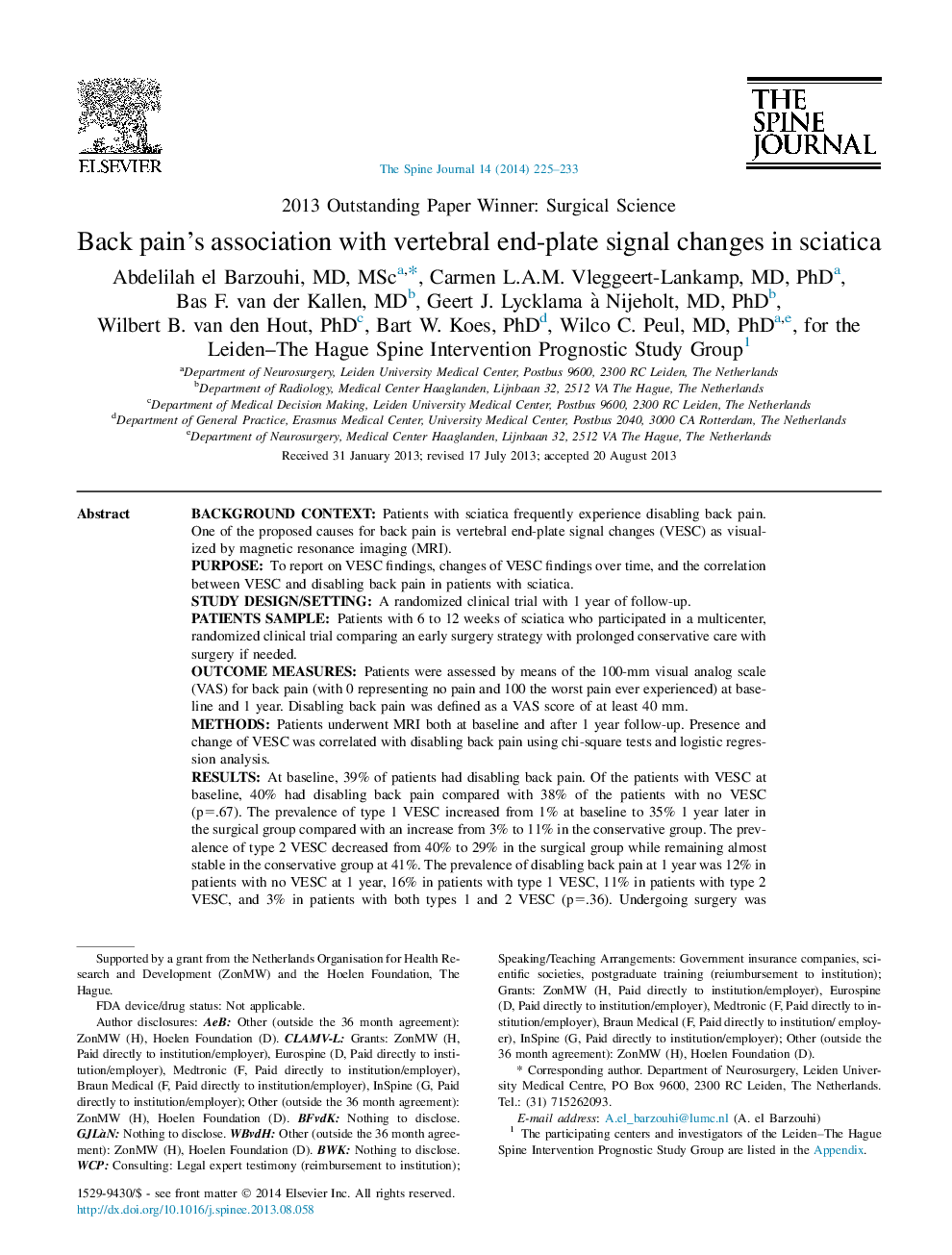| کد مقاله | کد نشریه | سال انتشار | مقاله انگلیسی | نسخه تمام متن |
|---|---|---|---|---|
| 6212875 | 1268605 | 2014 | 9 صفحه PDF | دانلود رایگان |
Background contextPatients with sciatica frequently experience disabling back pain. One of the proposed causes for back pain is vertebral end-plate signal changes (VESC) as visualized by magnetic resonance imaging (MRI).PurposeTo report on VESC findings, changes of VESC findings over time, and the correlation between VESC and disabling back pain in patients with sciatica.Study design/settingA randomized clinical trial with 1 year of follow-up.Patients samplePatients with 6 to 12 weeks of sciatica who participated in a multicenter, randomized clinical trial comparing an early surgery strategy with prolonged conservative care with surgery if needed.Outcome measuresPatients were assessed by means of the 100-mm visual analog scale (VAS) for back pain (with 0 representing no pain and 100 the worst pain ever experienced) at baseline and 1 year. Disabling back pain was defined as a VAS score of at least 40 mm.MethodsPatients underwent MRI both at baseline and after 1 year follow-up. Presence and change of VESC was correlated with disabling back pain using chi-square tests and logistic regression analysis.ResultsAt baseline, 39% of patients had disabling back pain. Of the patients with VESC at baseline, 40% had disabling back pain compared with 38% of the patients with no VESC (p=.67). The prevalence of type 1 VESC increased from 1% at baseline to 35% 1 year later in the surgical group compared with an increase from 3% to 11% in the conservative group. The prevalence of type 2 VESC decreased from 40% to 29% in the surgical group while remaining almost stable in the conservative group at 41%. The prevalence of disabling back pain at 1 year was 12% in patients with no VESC at 1 year, 16% in patients with type 1 VESC, 11% in patients with type 2 VESC, and 3% in patients with both types 1 and 2 VESC (p=.36). Undergoing surgery was associated with increase in the extent of VESC (odds ratio [OR], 8.6; 95% confidence interval [CI], 4.7-15.7; p<.001). Patients who showed an increase in the extent of VESC after 1 year did not significantly report more disabling back pain compared with patients who did not show any increase (OR, 1.2; 95% CI, 0.6-2.6; p=.61).ConclusionIn this study, undergoing surgery for sciatica was highly associated with the development of VESC after 1 year. However, in contrast with the intuitive feeling of spine specialists, those with and those without VESC reported disabling back pain in nearly the same proportion. Therefore, VESC does not seem to be responsible for disabling back pain in patients with sciatica.
Journal: The Spine Journal - Volume 14, Issue 2, 1 February 2014, Pages 225-233
